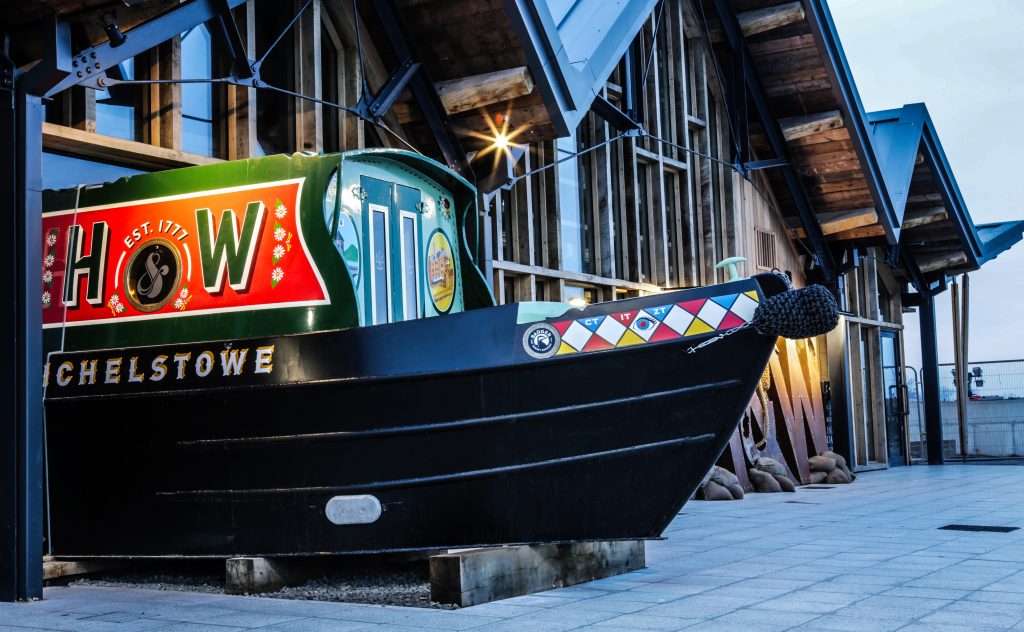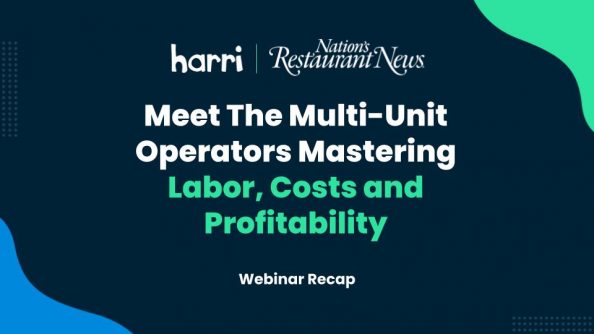Demand Forecasting in Hospitality: Staying One Step Ahead

- By Harri Insider Team | December 4, 2024
The hospitality industry thrives on meeting the expectations of its customers, but anticipating those expectations can be a daunting task. Factors such as seasonality, weather conditions, local events, and even broader economic trends influence customer behaviour, creating fluctuating demands that challenge even the most experienced operators.
Demand forecasting has evolved into a cornerstone of efficient operations for hospitality businesses. By predicting when, where, and how many customers will arrive, organisations can allocate resources strategically, avoiding the pitfalls of overstaffing or understaffing. In this blog, we’ll explore the principles and practices of demand forecasting and how it benefits not just businesses but also employees and customers.
The Complexity of Demand in Hospitality
Few industries experience demand variability as acutely as hospitality. A sunny weekend can bring a surge of customers to beer gardens, while a sudden rainstorm may drive reservations away from outdoor venues. Public holidays, local festivals, and even international sporting events can either fill a venue to capacity or render it eerily quiet.
This variability makes planning difficult. Many businesses rely on manual methods or gut instinct to estimate customer numbers, leading to inefficiencies that harm profitability. Overstaffing results in unnecessary costs, while understaffing can leave teams overstretched, customers dissatisfied, and reputations damaged.
Demand forecasting replaces guesswork with precision. Using historical data and predictive analytics, businesses can anticipate demand trends and plan accordingly. For example, knowing that bookings spike during school holidays or that footfall slows during mid-week lunch hours enables better resource allocation, resulting in smoother operations and happier customers.
How Advanced Tools Transform Forecasting
Traditional forecasting methods often rely on a narrow set of data points, such as last year’s sales figures or simple seasonal averages. While useful, these approaches lack the nuance required to account for external variables like weather conditions, competitor activity, or economic changes.
Modern AI-powered demand forecasting tools revolutionise this process by combining internal business data with external factors. They analyse historical sales alongside real-time inputs—such as weather forecasts, event calendars, and even social media trends—to create accurate demand models. These systems then provide actionable insights, allowing managers to fine-tune staffing and inventory decisions.
For instance, AI systems can identify microtrends in footfall, enabling businesses to optimise schedules down to 15-minute intervals. This level of precision ensures that staffing levels match actual demand, minimising costs while maintaining service quality.
Benefits for Employees and Customers
Effective demand forecasting doesn’t just improve operations; it enhances the experience for both employees and customers.
Employees benefit from more consistent and predictable schedules. In industries like hospitality, where irregular hours are common, this stability can make a significant difference to staff morale and work-life balance. Advanced forecasting tools also reduce last-minute schedule changes, which are a leading source of dissatisfaction among workers.
For customers, accurate forecasting translates to better service. With sufficient staff on hand during busy periods, wait times are reduced, and service standards remain high. Conversely, during quieter times, resources can be scaled back without compromising the guest experience.
This balance fosters a more harmonious relationship between employees and customers, where workers feel supported, and guests leave satisfied.

Case Study: Hall & Woodhouse's Transformation Through Data-Driven Workforce Management
Hall & Woodhouse, a family-owned pub and brewing company with a legacy spanning more than two centuries, recognised the need for modern workforce management solutions to sustain operational excellence across its estate of premium venues. As a business deeply committed to providing exceptional guest experiences, it faced challenges in aligning labour with fluctuating customer demand while ensuring its team members remained engaged and supported.
With Harri’s workforce management platform, Hall & Woodhouse introduced demand forecasting tools to better understand and predict footfall patterns at each of their locations. This data-driven approach allowed them to tailor staffing levels dynamically, ensuring that shifts were neither overstaffed nor understaffed. By matching labour to business needs, the company optimised costs without compromising service quality.
The impact extended beyond operational efficiencies. Harri’s platform facilitated greater visibility and collaboration among managers and team members, improving scheduling accuracy and reducing the strain of last-minute changes. Employees appreciated the predictable and transparent scheduling process, contributing to higher satisfaction and retention rates across the business.
Hall & Woodhouse’s success demonstrates the importance of combining technology with operational insight to tackle industry-wide challenges. To explore more about how Harri has helped hospitality businesses like Hall & Woodhouse thrive, click here.
Weather and Seasonality: The Often-Overlooked Variables
Weather and seasonality are among the most impactful yet underappreciated factors in hospitality demand forecasting. A warm spring day can transform a small café’s outdoor seating area into its busiest section, while an unexpected storm can reduce footfall by half.
Advanced forecasting systems integrate weather predictions into their analysis, providing managers with insights into how conditions might affect customer behaviour. For example, during colder months, pubs may see increased demand for cosy indoor seating, while seaside resorts experience a dip in foot traffic.
Seasonality also plays a crucial role. School holidays, for instance, often result in increased family bookings at restaurants and hotels, while January is typically a slower month for many venues. Understanding these patterns allows businesses to adjust their staffing, marketing, and inventory strategies accordingly.
The Financial Impact of Forecasting
Beyond operational benefits, demand forecasting has a measurable impact on the bottom line. By reducing waste—whether through overstaffed shifts or unsold inventory—businesses can cut costs and improve profitability.
For hospitality leaders looking to quantify this impact, tools like Harri’s ROI calculator offer valuable insights. This tool calculates potential savings based on the time currently spent creating and adjusting schedules. By identifying inefficiencies and suggesting optimised practices, businesses can make informed decisions about where to allocate resources.
Discover how much your business could save by trying the ROI calculator here.
Demand forecasting is not just a tool for operational efficiency; it’s a strategic advantage in an unpredictable industry. By understanding the factors that influence demand—be it weather, seasonality, or local events—hospitality businesses can plan proactively and remain agile in the face of change.
The benefits extend beyond cost control. Accurate forecasting creates a more supportive environment for employees, a better experience for customers, and a stronger foundation for long-term success.
As the industry becomes increasingly complex, investing in advanced forecasting solutions is not just about keeping up—it’s about staying ahead. Whether you’re a single-site operation or a multinational brand, the ability to anticipate demand can make the difference between surviving and thriving in hospitality.



















